
A particular lixiviation occurs in carbonated soils which is called decarbonatation.
The decarbonatation process represents the mobilisation of the carbonates, which dissolve in the form of soluble bicarbonates and migrate with the percolation waters. Carbonatation occurs when the bicarbonates change again into insoluble carbonates and they accumulate.
Accumulation of the secondary CO3 occurs at
a certain depth, so that the soil does not have any carbonates
in the upper horizons and has carbonates in the lower ones (typically
in C horizon ).

The carbonatation process is typical in arid, semiarid and sub-humid regions, with a sufficient lack of water for the CO3 to be able to accumulate in the soil. As a result of this process, calcic horizons are formed.
The morphology of the carbonate accumulations is a clear sign of their mobility. For example, their localised distribution in soil cracks and voids,
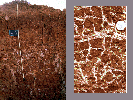
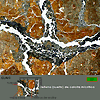
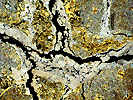
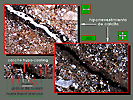
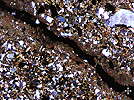
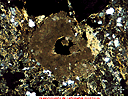
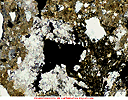
also in soft powdery nodules with a diffuse boundary, in other words, that integrate in the soil gradually,
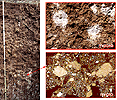

and the existence of coatings in the aggregates, as well as sometimes located in the upper part of gravel.
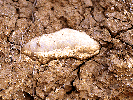
The carbonatation process is extensively developed on this Web server, in the Monograph section, in the chapter: Soil carbonatation and specifically the study of carbonates in the microscope is dealt with on the pages: Micromorphological aspects.
The carbonatation process is extensively developed on this Web server in the chapter: Soil carbonatation, and specifically the study of carbonates in the microscope is dealt with on the pages: Micromorphological aspects.